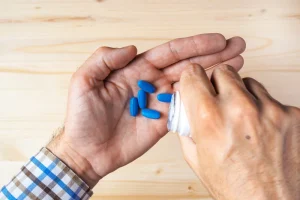
Alcohol withdrawal occurs when you are physically dependent on alcohol and suddenly stop drinking or significantly reduce the amount you consume. This is because your brain and body have adapted to the presence of alcohol and have compensated in several ways to function well when intoxicated. When you abruptly stop drinking, these compensations result in alcohol withdrawal symptoms, which range from uncomfortable to potentially life-threatening. New research has found that psilocybin reduces alcohol consumption in rats by altering the left nucleus accumbens in the brain.

Alcohol Tolerance and Changes in the Brain
- Even if the subjects only mentally rehearsed the task after drinking alcohol, they developed the same level of tolerance as those who actually physically practiced the task while drinking.
- You can also try keeping track of what triggers your desire to drink and find ways to change your habits.
- The researchers found no reduction in heart disease deaths among light or moderate drinkers, regardless of health or socioeconomic status, when compared with occasional drinkers.
- We’re not saying we never do this, we’re just saying that you should be careful when you do.
- You’re also going to be drunker than you think you are and are more likely to do something stupid.
If you feel that you sometimes drink too much alcohol, or your drinking is causing problems, or if your family is concerned about your drinking, talk with your health care provider. Other ways to get help include talking with a mental health professional or seeking help from a support group such as Alcoholics Anonymous or a similar type of self-help how to increase your alcohol tolerance group. Alcohol use disorder is a pattern of alcohol use that involves problems controlling your drinking, being preoccupied with alcohol or continuing to use alcohol even when it causes problems. This disorder also involves having to drink more to get the same effect or having withdrawal symptoms when you rapidly decrease or stop drinking.
Poor Reaction Time

Even if we handled alcohol well in early adulthood, this can change as we age. It is similar to any other allergy and intolerance that develops later in life. If you usually handle alcohol fine, remember that many factors can influence your tolerance on a day-by-day basis!
Young Adults Are Imbibing Less Than in the Past
- For example, experts now recognize a pre-addiction stage of alcohol use disorder (AUD).
- Animal studies also show that GLP-1 receptor agonists suppress the rewarding effects of alcohol and reduce alcohol consumption.
- Aggregated data over six time periods since 2001 show that drinking among adults aged 55 and older is now similar to 18- to 34-year-olds; however, far more middle-aged adults report imbibing.
- They generally agreed that abstaining is healthiest, but that for most people, a modest level of drinking doesn’t carry significant risk.
- Genetic differences do account for some differences in alcohol tolerance, which in some cases fall along ethnic lines.
Alcohol tolerance can be explained via several mechanisms – but here are four ways that tolerance may develop and change. A tolerance break is temporary abstinence from a substance to reduce or avoid chemical dependence and tolerance. Periods of abstinence can help you avoid building up a tolerance by not giving your body a chance to adapt to the drug.
The chronic drinker may be compelled to even increase their alcohol intake due to the lack of physical impact. For this reason, a person who has sound mental functions and can have coordinated conversations may show impairment when it comes to activities that involve eye-hand coordination such as driving. At this point, driving may be a death sentence even without the awareness of the drinker. Some people—including those who are elderly—may get wobbly after one alcoholic beverage, while others need a few drinks to feel any impact. “Body size and composition are significant factors in alcohol detoxification and tolerance regardless of age,” says Dr. Schwartz.

Lower Tolerance vs Intolerance
Repeatedly driving the same route home while intoxicated could cause the driver to develop a tolerance for the task and reduce alcohol-induced impairment. However, that tolerance for that specific task is not transferable to a new task. It’s also important to remember that drinking as much as you used to after a period of drinking less (or not at all) could lead to greater intoxication, blackout and accidents. It is important to recognize that tolerance is not the same thing as dependence or addiction.
Oropharyngeal cancer, a throat cancer that affects the pharynx, showed a nearly 5-fold increase. These findings are similar to prior studies that examined the risk of smoking tobacco and head and neck cancer risk. It’s possible that these people have a reduced tolerance to alcohol, the authors suggested; they may also take medications that interact poorly with alcohol. One group is an intergovernmental subcommittee that includes representatives from numerous health agencies. The other group, funded by Congress the same year to do a remarkably similar review, was convened by the National Academies of Science, Engineering and Medicine.
Can the moon influence human health? Surprising new research suggests it might.
- If you regularly drink a lot, you may start to need more alcohol to feel the same effects.
- These findings are similar to prior studies that examined the risk of smoking tobacco and head and neck cancer risk.
- Tolerance to the effects of alcohol can influence drinking behavior and consequences in many ways.
- Yet early indicators of alcohol issues show that if attention were paid, excessive drinking might be headed off before alcoholism develops.
- The genetic predisposition to alcohol tolerance could contribute to increased alcohol consumption and the risk of alcoholism in the sons of fathers with AUD.
- The problem is that a higher level of consumption can result in developing a physical dependence on alcohol and developing alcohol-related organ damage.
Acamprosate (Campral), usually taken three times a day, is another medication for AUD. Extensive evidence proves Naltrexone and acamprosate reduce heavy drinking and promote abstinence. Disulfiram (Antabuse) is another medication FDA-approved to treat alcohol use disorder, but it is used very infrequently. The most commonly used and recognized MAT for alcohol use disorders is naltrexone, taken orally or as an injection. Naltrexone helps decrease total drinks consumed per day, cravings, and pleasurable effects of alcohol. Injectable Naltrexone (Vivitrol) injections are given once a month, providing a way to get beneficial effects for 30 days at a time.

Alcohol Use Disorder

In some cases, sudden onset alcohol intolerance is triggered by the presence of a new disease. This is common in the case of Hodgkin’s Lymphoma, where those with this condition will feel pain after drinking.4 This is due to enlargement of the lymph nodes, resulting in swelling and pressure placed on the nerves. In fact, alcohol intolerance can develop at any stage of life, and it’s something that can happen to anyone. Symptoms of alcohol intolerance can range from mild (such as face reddening), to severe (anaphylaxis). Once an intolerance has developed, the only way to eliminate symptoms is to avoid alcohol altogether. Genetic, psychological, social and environmental factors can impact how drinking alcohol affects your body and behavior.